The Yuma-speaking tribes live in the desert and semi-desert area along the Colorado and Gila Rivers in what is now Arizona, California, Sonora, and Baja California Norte. This is an area that is nearly all desert or semi-desert, but the annual flooding along the Colorado River and along the Gila River made agriculture possible. Thus, there are agricultural oases with a fairly dense population.
The Yuman-speaking tribes include:
Cocopa: this is from the Mohave name for the tribe, Kwi-ka-pa whose meaning is unknown.
Mohave: this is a corruption of their native name Aha-makave which means “beside the water.”
Maricopa: this is the Spanish version of the O’odham name for the tribe. Their own name is Pipa’ or Pipatsje which means “men” or “people.” They originally lived along the Colorado River near present-day Parker, Arizona, but later moved up the Gila River away from the Colorado River.
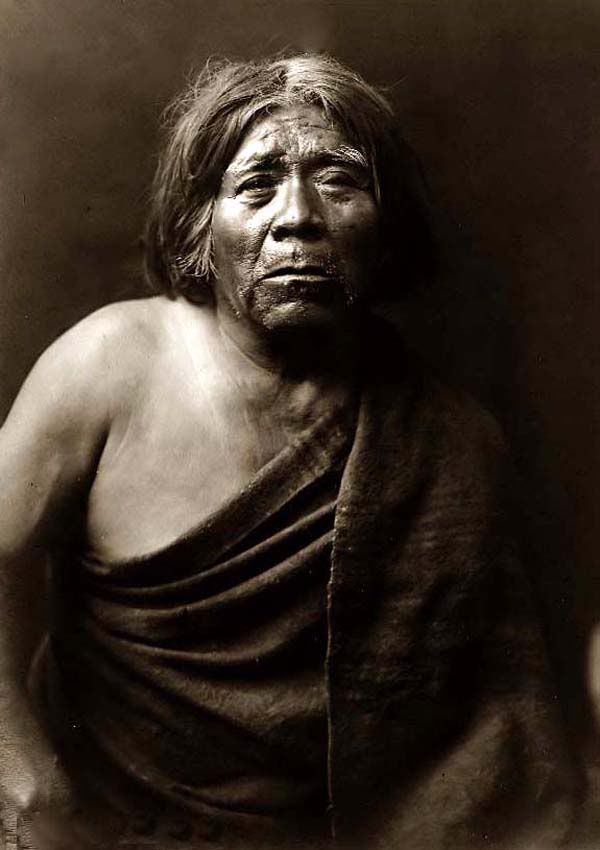
Shown above is a Maricopa portrait by Edward S. Curtis.
Yuma: this is from the O’odham name, lum, for the tribe. Their own name is Quechan which is in reference to the trail they followed in leaving the sacred mountain.
Hualapai: this is a corruption of their native name Hah-wah-lah-pai-yah which means “pine tree people.” In English the name is also spelled Walapai. The Walapai were divided politically into three subtribes: Middle Mountain People in the northwest, Yavapai Fighters in the south, and Plateau People in the east.
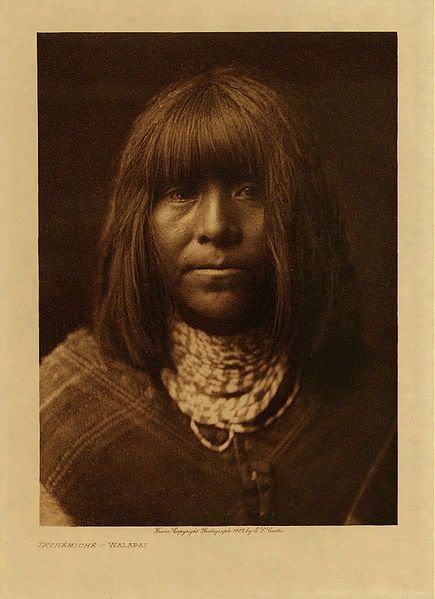
Shown above is a Hualapai portrait by Edward S. Curtis.
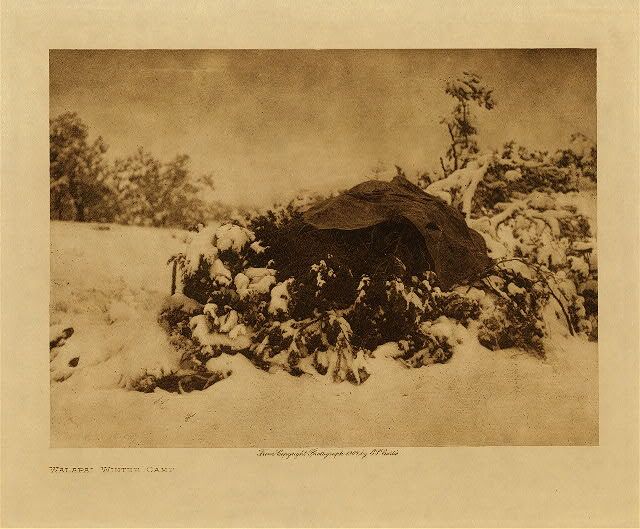
Shown above is a Curtis photo of a Hualapai winter camp.
Yavapai: this may be derived from En-ya-va-pai-aa which means “people of the sun,” or from Yawepe which means “crooked mouth people.” The Yavapai were not a single political or linguistic entity, but rather they were a collection of locally organized groups speaking mutually intelligible but distinct sub-dialects.
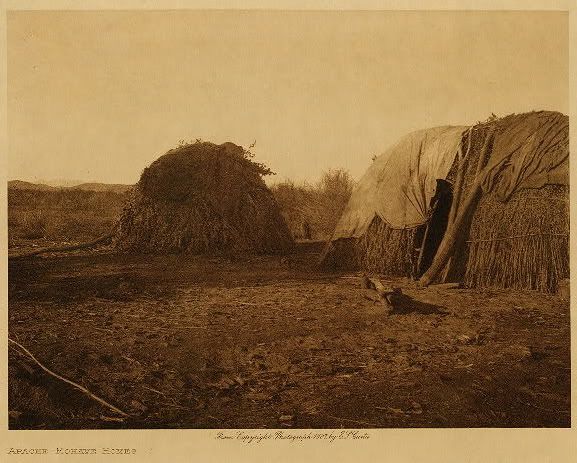
Shown is a Curtis photo of some Yavapai shelters.
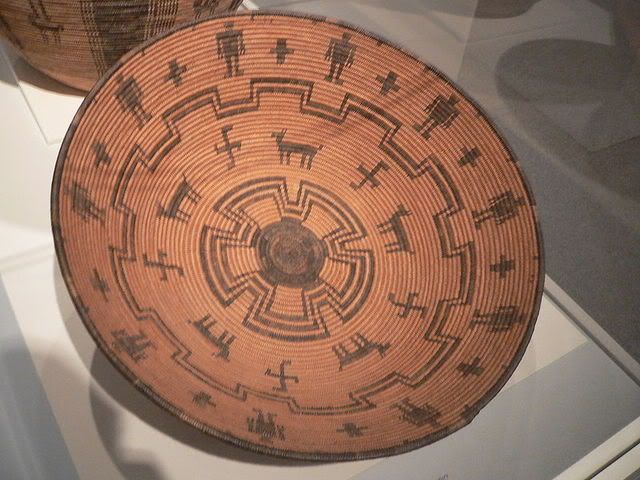
Shown above is a Yavapai basket.
Havasupai: this is from their native name Havasuwaipaa which means “Blue Water People.”
Migrations:
The Yuman-speaking people, according to their oral history, were created at Avikwame (now designated as Mount Newberry). It was here that Mastamho (also known as Mustamxo and Kumastamxo) brought forth the different people and sent them to live in the different regions along the Colorado River.
Havasupai oral tradition tells of a migration from Moon Mountain, near present-day Blythe, California, on the Colorado River. The people settled for a while near present-day Peach Springs, Arizona. However, a dispute broke out and the groups who were settled there scattered to new homes. One group, the ancestors of the present-day Havasupai, came to Havasu Creek where they remained for many generations. When the population became too great for the canyon, a large group under the leadership of Mud Head left and continued their migration east.
There is another Havasupai oral tradition which tells that the people once lived near the Little Colorado River. However, conflicts with the Whaje (Apache) drove them from their home and they crossed the desert to the San Francisco Mountains. They did not find peace here, so they continued their journey westward. They came to a canyon that cut across their path and they worked their way down to the floor where they found an oasis of green cut by a stream of blue water.
Yavapai oral tradition tells that the people first emerged from the underground through a large hole called Ahagaskiaywa. Today this hole is identified as Montezuma’s Well. After some time, water flooded from the hole and destroyed all of the people except for a single woman who found refuge in a hollow log.
Traditional Yavapai territory stretched from the San Francisco Peaks in the north, to the Pinal Mountains in the east, and to the confluence of the Gila and Colorado Rivers in the southwest.
Some archaeologists feel that the Patayan culture which developed along the Colorado River about 1,300 years ago was ancestral to the Yavapai. These scholars suggest that about 700 years ago, some Patayan groups began leaving the Colorado River area and moving east into the highlands of Arizona. These groups then evolved into the Yavapai.
The Yavapai have a number of oral traditions describing how they separated from the other people who emerged from the Ahagaskiaywa. Some stories tell of a children’s game that turned into a quarrel which then escalated into hostilities among the adults. As a result, the Yavapai drove the Pai people out of their homeland and the two became enemies.
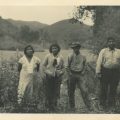
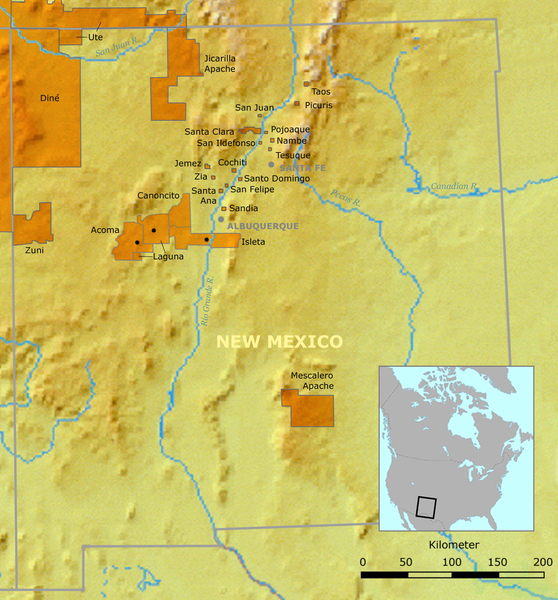
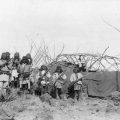
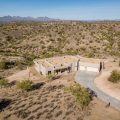
Leave a Reply